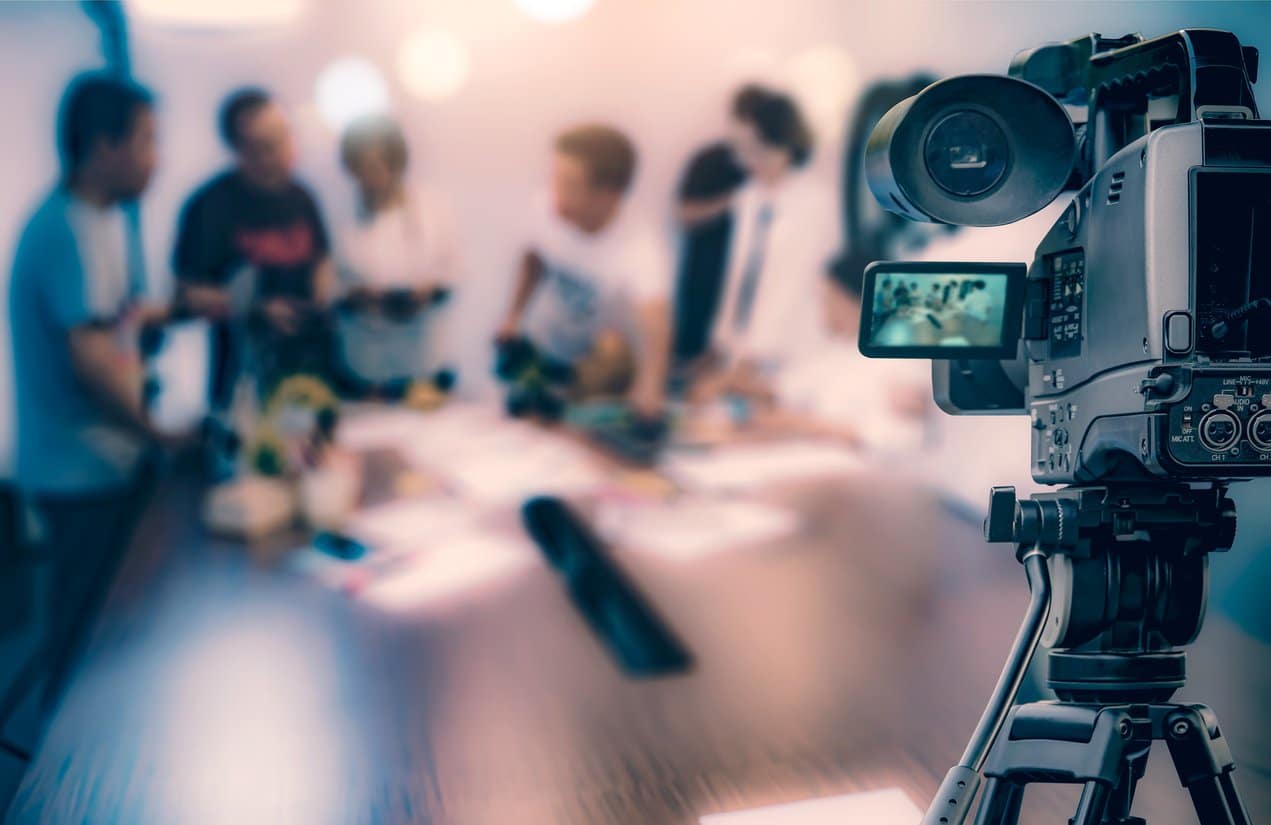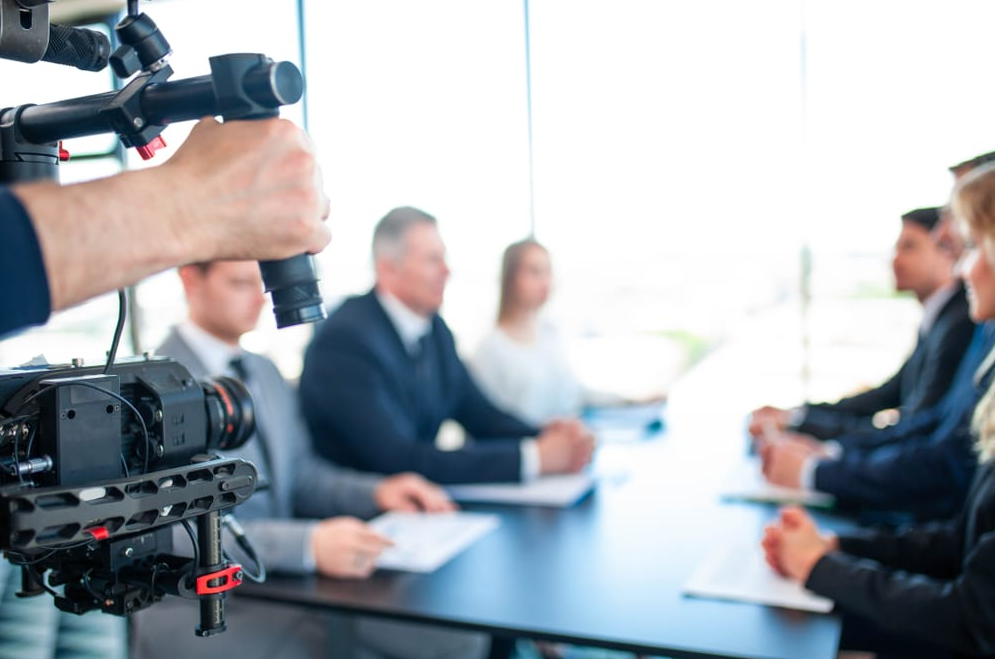The Ultimate Guide to Legal Videography for Lawyer and Legal Teams
The Ultimate Guide to Legal Videography for Lawyer and Legal Teams
Blog Article
Exploring the Devices of Legal Videography: Unveiling Its Procedure in Shielding Genuine Aesthetic Statement for Judicial Procedures
In the world of judicial procedures, the function of legal videography stands as a cornerstone in preserving and offering aesthetic evidence. As innovation remains to advancement, the mechanisms behind lawful videography have actually ended up being progressively elaborate, offering an important layer of authenticity to testimonies recorded on video clip. By delving into the functional intricacies of legal videography, one can uncover the thorough procedures that guard the integrity of aesthetic proof presented in courts - Legal Videography. This expedition not only clarifies the historical development of lawful videography however additionally means the future fads that may even more revolutionize how aesthetic statements are upheld in the world of justice.
Historical Development of Legal Videography
Examining the historical development of legal videography exposes a substantial makeover in the catching and discussion of aesthetic evidence within the legal landscape. In the past, lawful process heavily relied upon created transcripts and photos to document events and supply proof. With the introduction of video clip technology, the legal sector witnessed a standard change in how visual testament was caught and provided.
The development of legal videography can be traced back to the late 20th century when advancements in video recording devices made it a lot more obtainable for use in courtrooms. This technological development not only enhanced the accuracy and reliability of visual proof yet additionally revolutionized the way instances were presented to courts and courts (Legal Videography). Lawyers began to acknowledge the convincing power of video recordings in communicating feelings, nuances, and non-verbal signs that created records or photos alone might not record efficiently

Technology Developments in Video Documentation
What essential technological advancements have revolutionized video clip documents in the lawful field? The lawful area has seen substantial innovations in video documents innovation that have enhanced the credibility and dependability of visual evidence in judicial process. One of the key advancements is high-def (HD) video recording capabilities, which provide crystal-clear photos and sharp information that are important for accurately recording statements, faces, and various other aesthetic cues. In addition, the combination of timestamping and metadata features in video clip documentation devices has made it possible for exact documentation of when and where the video clip was tape-recorded, guaranteeing the integrity of the proof presented in court.
Moreover, improvements in video clip security and watermarking modern technologies have reinforced the safety and tamper-proof nature of video evidence, guarding it against unauthorized changes or meddling. Additionally, the arrival of cloud storage services and remote gain access to capacities has streamlined the storage, retrieval, and sharing of video evidence, assisting in smooth collaboration among attorneys and ensuring efficient access to important aesthetic testimonies when needed. These technical improvements in video clip paperwork have actually undoubtedly revolutionized the legal area, boosting the precision, credibility, and admissibility of visual evidence in judicial proceedings.
Role of Lawful Videographers in Court Room Setups
The evolution of video clip paperwork modern technology in the lawful area has necessitated an essential duty for lawful videographers in court settings, making certain the stability and reliability of aesthetic statements presented throughout judicial procedures. Lawful videographers play an essential function in recording and protecting accurate aesthetic evidence that can be browse around this site pivotal in litigation. Their obligation includes establishing devices, recording process, and producing high-quality video clips that accurately show the events in the court.
In courtroom setups, legal videographers need to comply with rigorous guidelines and requirements to keep the authenticity of the aesthetic record. They need to possess a keen eye for information and a complete understanding of legal treatments to ensure that the video they capture is a real representation of the occasions that transpired. Furthermore, lawful videographers usually work very closely with legal teams to make sure that the video clip proof aligns with the situation's needs and can be successfully offered in court to support the legal debates being made. On the whole, the duty of lawful videographers in court setups is essential in supporting the concepts of justice and guaranteeing the openness of legal proceedings.

Ensuring Admissibility and Honesty of Video Evidence
To preserve the reliability of aesthetic proof presented in legal procedures, making certain the admissibility and stability of video clip evidence is an important responsibility for legal videographers. Admissibility describes the approval of proof by the court, and for video clip proof to be admissible, it needs to fulfill certain requirements. Legal videographers play a critical role in ensuring that the videos they catch follow the rules of evidence, such as credibility, reliability, and visit the site relevance.
Stability of video evidence involves maintaining the originality and accuracy of the video from the moment it is recorded till it exists in court. This consists of firmly keeping the video documents, recording the chain of guardianship, and avoiding any type of meddling or alterations. Legal videographers must follow rigorous procedures to ensure the integrity of the video clip proof and stop any type of challenges to its credibility.
Future Trends in Legal Videography
Offered the enhancing dependence on modern technology in lawful process, legal videographers are poised to accept innovative developments forming the future of aesthetic testimony capture and presentation. Among the popular trends on the perspective is the combination of virtual fact (VR) and augmented fact (AR) innovations into lawful videography. These technologies have the possible to reinvent how aesthetic evidence exists in courts, allowing discretionary to submerse themselves in the scene of the crime or case.
Moreover, making use of expert system (AI) algorithms for video evaluation is anticipated to streamline the process of evaluating and examining big quantities of video clip footage. AI can help in determining crucial moments, anomalies, and patterns within video clips, enhancing the efficiency of legal investigations.

Verdict
Finally, legal videography has played an essential duty in offering genuine visual proof for judicial process. With technical developments and the proficiency of lawful videographers, the integrity and admissibility of video proof are ensured in court room setups. As lawful videography remains to evolve, it will certainly be important to maintain criteria that maintain the accuracy and dependability of visual testament for the future of lawful procedures.
Checking out the historical progression of lawful videography exposes a substantial transformation in the catching and discussion of aesthetic evidence within the legal landscape.The development of video clip documents technology in the legal area has required a crucial role for legal videographers in court setups, making certain the integrity and reliability of visual statements provided during judicial procedures. Furthermore, lawful videographers usually function closely with advice lawful groups to ensure that the video proof straightens with the instance's needs and can be effectively presented in court to support the lawful debates being made.To keep the trustworthiness of visual evidence presented in legal process, making certain the admissibility and honesty of video clip proof is an important obligation for legal videographers. As legal videography continues to evolve, it will be essential to copyright standards that keep the precision and dependability of visual statement for the future of legal proceedings.
Report this page